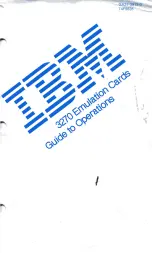
8. Typical Applications
244
Tsi308 User Manual
80D4000_MA001_02
Tundra Semiconductor Corporation
www.tundra.com
•
L_RX_CTL_H/L
•
L_RST_N
•
L_POWER_OK
•
LDTSTOP_N
The RST_N , POWER_OK and LDTSTOP_N signals are not subject to the same stringent
layout requirements of the CAD, CTL, and CLK signals.
The ball assignments for the pins listed above on the AS90L10208 conform to the
recommendations outlined in the Interface Design Guide published by the HyperTransport
Technology Consortium, thereby allowing for easy point-to-point routing between conformant
devices on the system board. Conformant devices have their ball out assigned in a manner that
permits easier breakout for clean point-to-point routing without additional layer changes.
If the die pad-to-ball trace length matching of the device that interfaces to the AS90L10208 does
not fall within the range recommended by the HyperTransport consortium in the Interface
Design Guide or any layout constraints prevent straight point to point routing on the system
board, then trace-by-trace compensation on the system board will be required to meet the
constraints laid out in the Interface Design Guide for end to end trace length variations between
different signals.
When using trace-by-trace compensated matching, the system board trace length must
compensate for the mismatch in the package trace lengths on a trace-by-trace basis. Effectively,
the length of the system board trace must be lengthened or shortened to compensate for short or
long traces on the transmitter or receiver package. The following steps would produce this type
of trace matching:
1.
Gather trace-by-trace length data for both transmitter and receiver packages.
2.
Identify the longest system board trace within each clock group. (Use Manhattan distances
for approximation.)
3.
Route the longest signal (differential pair) so the differential skew specification is met, and
determine effective pad-to-pad signal length (adding transmitter and receiver package trace
electrical lengths).
4.
Assign length rules to each remaining signal trace such that the system board trace length
plus the sum of the package trace electrical lengths equals the effective pad-to-pad signal
length of the longest signal within the clock group.
5.
Route the rest of the clock group.
6.
Extract resulting system board trace lengths and add the sum of the package electrical
lengths to determine if skew control has been maintained.
Содержание TSI308
Страница 4: ...4 Tsi308 User Manual 80D4000_MA001_02 Tundra Semiconductor Corporation www tundra com ...
Страница 6: ...6 Tsi308 User Manual 80D4000_MA001_02 Tundra Semiconductor Corporation www tundra com ...
Страница 12: ...Contents 12 Tsi308 User Manual 80D4000_MA001_02 Tundra Semiconductor Corporation www tundra com ...
Страница 14: ...List of Figures 14 Tsi308 User Manual 80D4000_MA001_02 Tundra Semiconductor Corporation www tundra com ...
Страница 20: ...20 Tsi308 User Manual 80D4000_MA001_02 Tundra Semiconductor Corporation www tundra com ...
Страница 69: ...2 Interface Operation 69 Tsi308 User Manual 80D4000_MA001_02 Tundra Semiconductor Corporation www tundra com ...
Страница 70: ...2 Interface Operation 70 Tsi308 User Manual 80D4000_MA001_02 Tundra Semiconductor Corporation www tundra com ...
Страница 187: ...4 Register Descriptions 187 Tsi308 User Manual 80D4000_MA001_02 Tundra Semiconductor Corporation www tundra com ...
Страница 188: ...4 Register Descriptions 188 Tsi308 User Manual 80D4000_MA001_02 Tundra Semiconductor Corporation www tundra com ...
Страница 258: ...9 Ordering Information 258 Tsi308 User Manual 80D4000_MA001_02 Tundra Semiconductor Corporation www tundra com ...
Страница 260: ...Index 260 Tsi308 User Manual 80D4000_MA001_02 Tundra Semiconductor Corporation www tundra com ...
















































